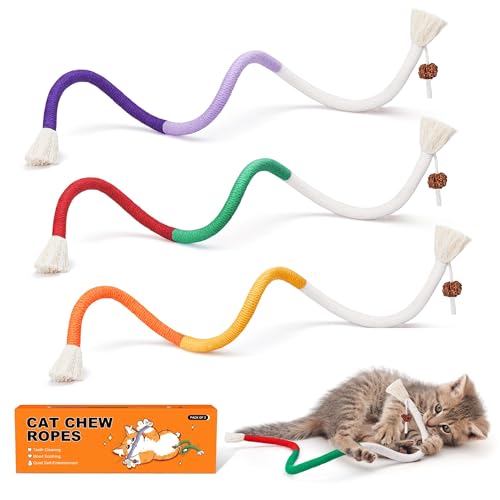If you’ve got a lazy cat, you know the struggle of trying to get them off the couch and into playtime mode. It can feel like an uphill battle, especially when all they want to do is lounge in the sun. But don’t worry, I’ve been there too, and I’ve discovered some fun and effective ways to spark their interest and get them moving.

Understanding Cat Behavior
Cats often display a complex mix of behaviors that can seem puzzling. Understanding their nature can help me find better ways to engage a lazy cat in playtime.
The Nature of Laziness in Cats
Laziness in cats isn’t true laziness. It often stems from their instincts. Cats are natural hunters, but they also conserve energy. They tend to sleep for 12 to 16 hours a day. This behavior helps them stay sharp for short bursts of activity, like hunting. Their leisurely lifestyle is normal and part of their charm.
Common Reasons for Inactivity
Several factors lead to inactivity in cats.
- Age: Older cats tend to move less. They might prefer cozy spots over playtime.
- Health Issues: Illness or pain can cause a cat to avoid activity. Regular vet check-ups can help rule out problems.
- Boredom: Cats need mental and physical stimulation. If they lack toys or interaction, they’ll likely loaf around.
- Comfort: Cats love warm, soft spots. They might choose a sunny windowsill over chasing a toy.
- Diet: Overweight cats may find it hard to move. A balanced diet keeps them fit and more playful.
Recognizing these factors can help me encourage my lazy cat to join in the fun.
Importance of Play for Cats
Play is crucial for cats. It keeps them active and mentally stimulated. Engaging in playtime helps strengthen the bond between me and my cat.
Benefits of Playtime
Playtime offers several benefits. It mimics hunting behavior, allowing cats to express their natural instincts. It also improves their coordination and agility. Playing with toys keeps my cat entertained and reduces boredom. Additionally, regular play can prevent behavioral issues caused by pent-up energy.
Impact on Health and Well-being
Play positively impacts my cat’s health. Active cats maintain a healthy weight and muscle tone. Regular exercise can lower the risk of obesity-related diseases. Mental stimulation from play reduces stress and anxiety levels. Overall, playtime enhances my cat’s mood and happiness, creating a more vibrant and joyful pet.
Tips for Engaging a Lazy Cat
Keeping my lazy cat active can be a fun challenge. Here are some effective ways to encourage playtime.
Choose the Right Toys
Selecting the right toys can make all the difference. I prefer toys that mimic prey, like feather wands or small balls. Cats are natural hunters. They love anything that moves. Bright colors and sounds grab their attention. Rotating toys regularly keeps things fresh and exciting.
Create a Stimulating Environment
A stimulating environment engages cats. I use cat trees, scratching posts, and cozy hideaways. These provide opportunities for climbing and exploring. Adding vertical spaces encourages movement. Interactive play areas with tunnels or boxes can spark curiosity, too. I also place toys in different rooms to promote exploration.
Establish a Routine
Establishing a consistent play routine helps. I dedicate time each day for play sessions. Short sessions of 10-15 minutes work best. Morning and evening times are ideal, as cats are more active then. My cat learns to expect playtime, making her more eager to engage. Consistency fosters enthusiasm for play.
Interactive Playtime Ideas
Engaging a lazy cat in playtime can be fun and rewarding. Here are some effective activities to spark your cat’s interest.
Solo Play Activities
I enjoy providing my cat with solo play options. These activities keep them entertained even when I’m busy. Here are a few favorites:
- Puzzle Toys: These toys hide treats inside. My cat loves figuring out how to get to the food. It’s mentally stimulating and rewarding.
- Laser Pointers: I shine a laser around the room. My cat can’t resist chasing the tiny dot. It encourages movement, which is great for their exercise.
- Interactive Balls: I use balls with bells or lights inside. These toys attract my cat’s attention. They can swat and chase them easily.
- Crinkle Toys: These toys make interesting sounds. My cat enjoys playing with them. The texture and noise encourage her to engage and explore.
Engaging with Your Cat
Connecting with my cat during playtime is vital. Here are ways to make our time together special:
- Use Feather Wands: I wave feather toys in the air. My cat leaps and pounces, mimicking hunting. This creates a bond between us.
- Hide and Seek: I hide treats around the house. My cat uses her nose to find them. It’s a fun way for her to explore and engage her senses.
- Create a Cat Agility Course: I set up tunnels and boxes. My cat loves to climb and jump through them. It’s physically challenging and mentally stimulating.
- Follow My Movements: I can walk around the house with a toy. My cat often follows my lead. It encourages her to move and play alongside me.
Engagement makes playtime exciting for both of us. By mixing active play with solo activities, my lazy cat becomes a more active and happy companion.
When to Seek Professional Help
If playtime isn’t happening, seeking professional help can be essential. Notice if your lazy cat shows signs of health issues.
Identifying Underlying Health Issues
I notice that a sudden change in my cat’s behavior can signal a hidden health problem. Look for signs like:
- Decreased appetite: When my cat stops eating, it’s a reason for concern.
- Lethargy: If my cat sleeps more than usual, it could indicate an issue.
- Weight changes: Gaining or losing weight unexpectedly might suggest a health concern.
- Hiding: If my cat avoids interaction, it often means something’s not right.
These signs help determine if my cat needs a check-up. Always trust your instincts when something feels off.
When to Consult a Veterinarian
If my cat shows any of the above signs, I consult a veterinarian right away. A vet can provide a thorough examination. They may suggest tests to check for issues like:
- Thyroid problems
- Diabetes
- Arthritis
Addressing these conditions early helps ensure my cat stays healthy and playful. If my cat isn’t responding to toys or playtime, a vet visit often brings peace of mind.
Conclusion
Finding ways to engage a lazy cat can be a rewarding journey. I’ve discovered that understanding their behavior and natural instincts is key to sparking their interest in playtime. By creating a stimulating environment and incorporating a variety of toys and activities, I’ve seen my cat become more active and playful.
It’s all about patience and consistency. Regular play not only keeps our furry friends healthy but also strengthens the bond we share. If you ever notice any concerning changes in your cat’s behavior, don’t hesitate to reach out to a vet. After all, a happy cat leads to a happy home. Let’s keep the fun going and enjoy every playful moment together!
















